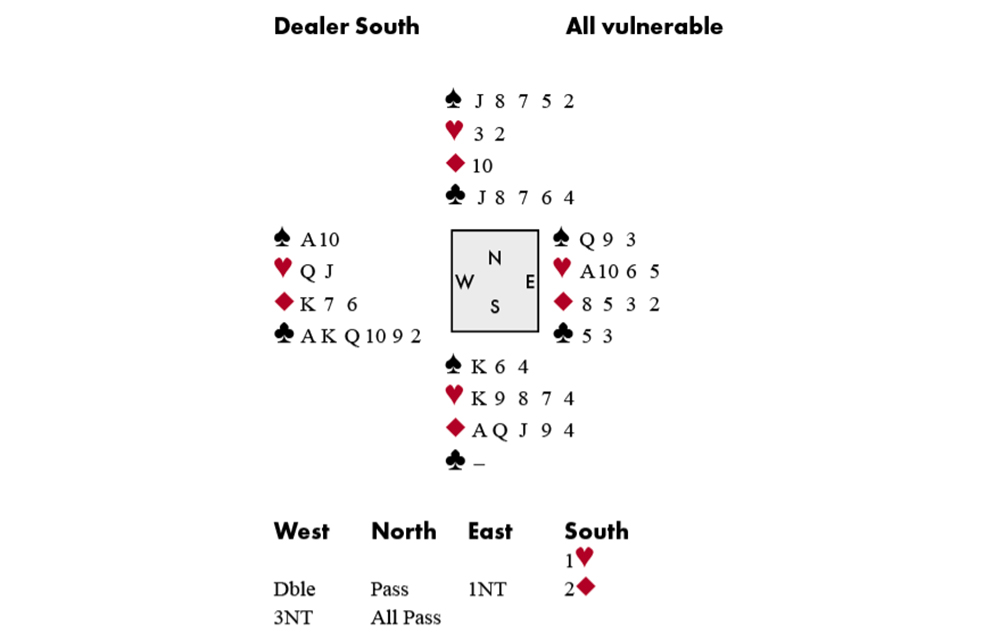o think for a long time, I feel a strange mix of awe and inferiority. It’s not the fact that they’re thinking, of course – we all do that. It’s the awareness that when it comes to difficult hands, their thought processes resemble mine as much as an Olympic sprinter resembles a contestant in an egg-and-spoon race. They enter a higher dimension of awareness, skill and clarity.
Take my friend David Gold: he found an extraordinary solution to make a tricky 3NT during the recent Reykjavik Bridge Festival (see diagram).
South led ◆Q and David (East) ducked. South continued with the ◆J, won with the ◆K. North discarded a club. If clubs were 3-2, David had nine easy tricks. However, South was marked with at least 55 in the red suits, so was likely to be short in clubs. In fact, unless South held the singleton ♣J, clubs were probably 5-0, as holding four to the ♣J , North wouldn’t discard one. That meant only eight tricks – and little chance of a heart finesse working as South surely had both the ♥K and the ♠K. David’s solution? To set up a ‘strip-squeeze’ on South – and to do so he needed to play the ♣10 from ♣AKQ1092!
North won with his ♣J and found the best switch: a heart. David won with the ♥A, crossed to a club and ran the suit. In the four-card ending, dummy held ♠A10♥Q◆7, declarer ♠Q9♥106, and South had come down to ♠K6♥K◆A. David threw South in with a heart. South cashed his ◆A, but then had to play a spade away from his ♠K making the ♠Q David’s ninth trick. Can you see how David’s plan could have been foiled? North shouldn’t have discarded a club – because when David played the ♣10 he needed to duck it!








Comments
Join the debate for just £1 a month
Be part of the conversation with other Spectator readers by getting your first three months for £3.
UNLOCK ACCESS Just £1 a monthAlready a subscriber? Log in